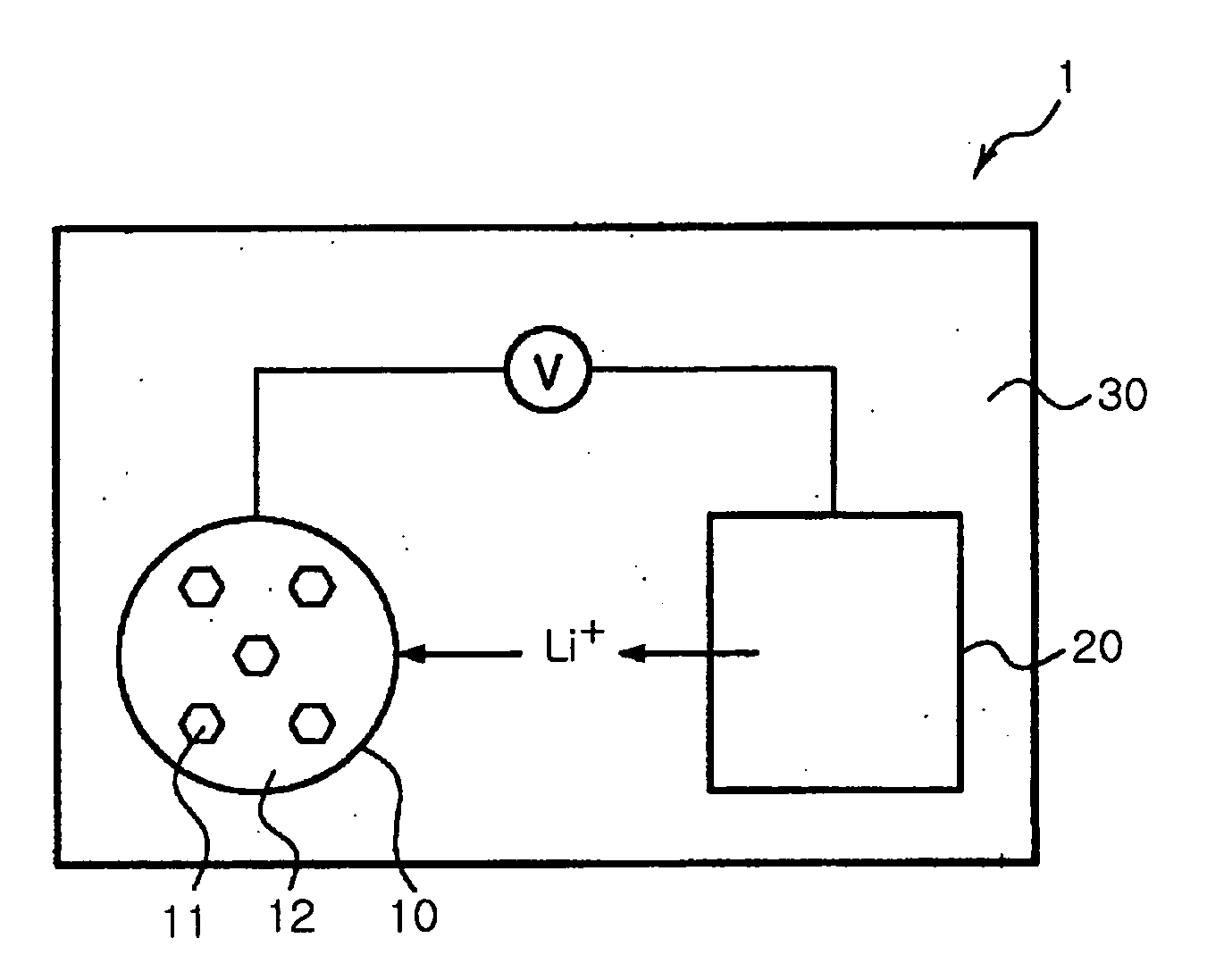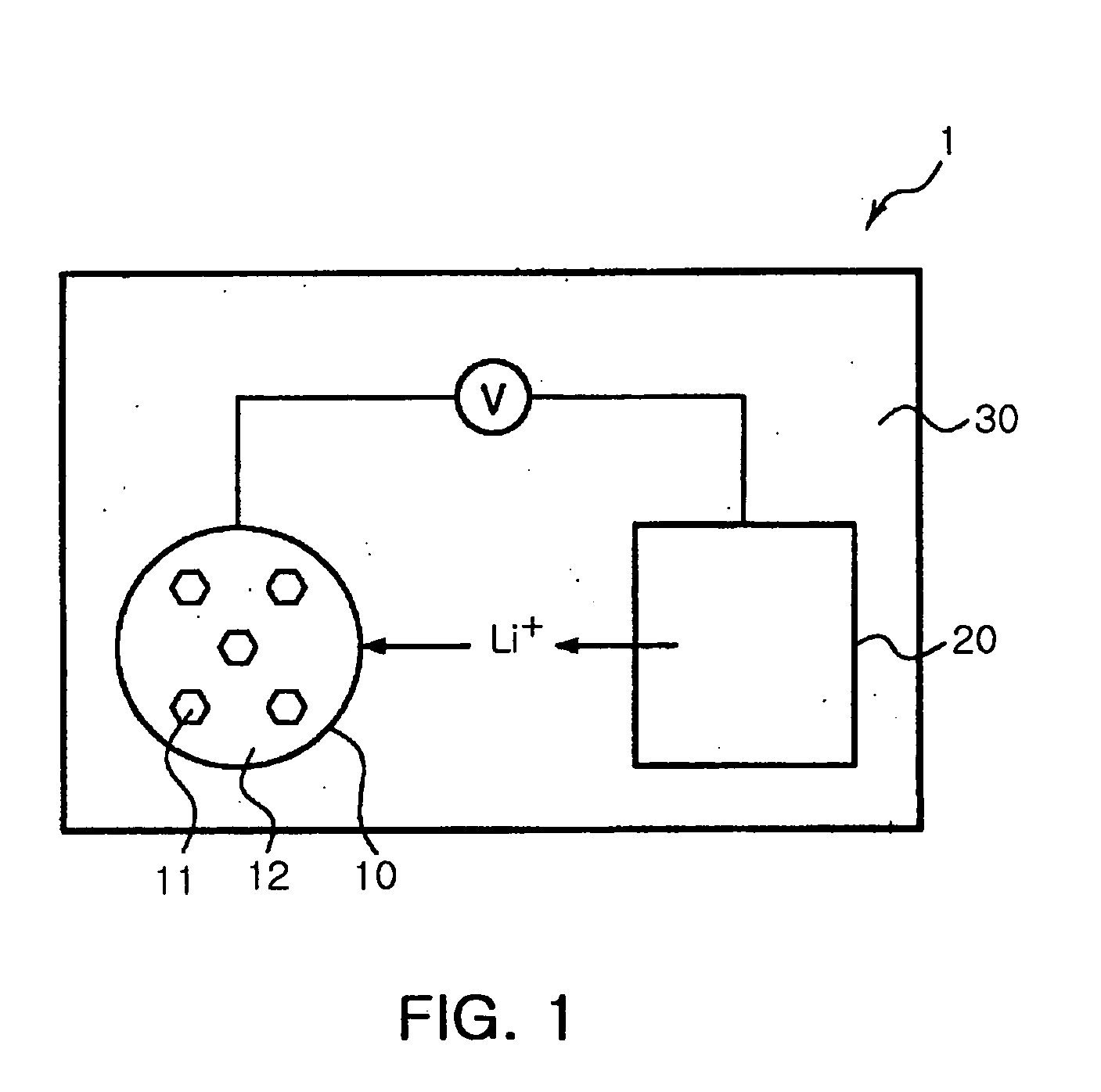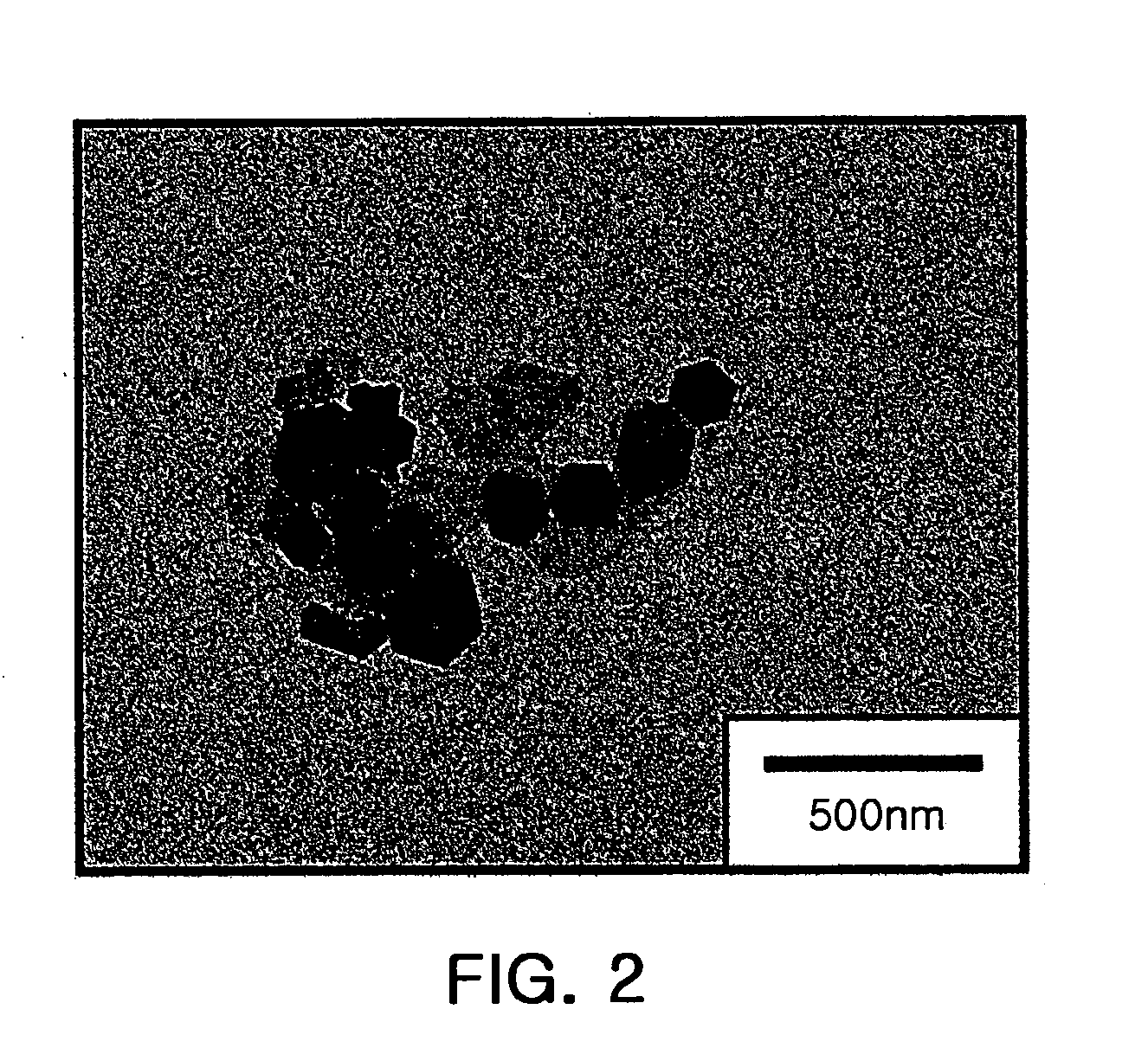Preparing method of tin sulfide nanoparticles and manufacturing method of lithium ion battery using the same
a technology nanoparticles, which is applied in the field of preparing tin sulfide nanoparticles and manufacturing methods of lithium ion batteries using the same, can solve the problems of large size of nanoparticles obtained, high cost of synthesizing nanoparticles, and high equipment requirements, and achieves easy control of size and morphology.
- Summary
- Abstract
- Description
- Claims
- Application Information
AI Technical Summary
Benefits of technology
Problems solved by technology
Method used
Image
Examples
example 1
Preparing SnS2 Nanoparticles
[0071]60 mg of Sn(S2CNEt2)4 as a tin sulfide precursor was mixed with 5 ml of oleyl amine to prepare a mixture. The mixture was heated at 280° C. for 10 minutes to be thermally decomposed. After tin sulfide nanoparticles were sufficiently formed, 6 mL of toluene and 20 mL of acetone were added to the mixture and the mixture was centrifuged using a centrifuge to produce SnS2 nanoparticles.
[0072]A sample was prepared by dropping 20 μl of solution containing the obtained SnS2 nanoparticles on a TEM grid (made by Ted Pella Inc.) having a carbon film applied thereon. The sample was dried for about 30 minutes, and observed with a field emission transmission electron microscope (FE-TEM), which is made by Zeiss and has an accelerating voltage of 100 kV. The result is shown in FIG. 2. Also, powder of SnS2 nanoparticles was observed by a scanning electron microscope (SEM) and the result is shown in FIG. 3.
[0073]Referring to FIGS. 2 and 3, the prepared SnS2 nanopart...
example 2
Synthesizing SnS2 Nanoparticles Massively
[0078]In Example 2, tin sulfide nanoparticles were prepared identically to Example 1 except that 3 g of Sn(S2CNEt2)4 3 which is 50 times greater in the amount was employed as a tin sulfide precursor. The SnS2 nanoparticles prepared were observed with the TEM and the result is shown in FIG. 8. Referring to FIG. 8, the SnS2 nanoparticles, even though produced massively, had a hexagonal plate shape. Therefore, according to the preparation method of the present invention, even when the tin sulfide nanoparticles were synthesized massively, nanoparticles with superb crystallinity were produced.
example 3
Preparing SnS Nanoparticles
[0079]Tin sulfide nanoparticles were prepared identically to Example 1 except that 1 mL of oleyl amine and 4 mL of dodecane thiol were employed as a surfactant.
[0080]The tin sulfide nanoparticles obtained were observed with the TEM and SEM, and the results are shown in FIGS. 9 and 10, respectively. Referring to FIG. 9, the synthesized tin sulfide nanoparticles were shaped as a brick, and unlike Example 1, SnS nanoparticles were produced. The SnS nanoparticles had a size of about 50 nm to 150 nm. The nanoparticles were observed with a high-voltage high resolution TEM and the result is shown in FIG. 11. As a result of analysis, the SnS nanoparticles were found to be a single crystal and identical in interlattice distance to an orthorhombic structure. Also, FIG. 12 illustrates X-ray diffraction analysis results of the nanoparticles, and demonstrates that the nanoparticles are identical to the orthorhombic crystal structure. Referring to FIG. 12, perpendicular...
PUM
| Property | Measurement | Unit |
|---|---|---|
| temperature | aaaaa | aaaaa |
| temperature | aaaaa | aaaaa |
| size | aaaaa | aaaaa |
Abstract
Description
Claims
Application Information
 Login to View More
Login to View More - R&D
- Intellectual Property
- Life Sciences
- Materials
- Tech Scout
- Unparalleled Data Quality
- Higher Quality Content
- 60% Fewer Hallucinations
Browse by: Latest US Patents, China's latest patents, Technical Efficacy Thesaurus, Application Domain, Technology Topic, Popular Technical Reports.
© 2025 PatSnap. All rights reserved.Legal|Privacy policy|Modern Slavery Act Transparency Statement|Sitemap|About US| Contact US: help@patsnap.com



